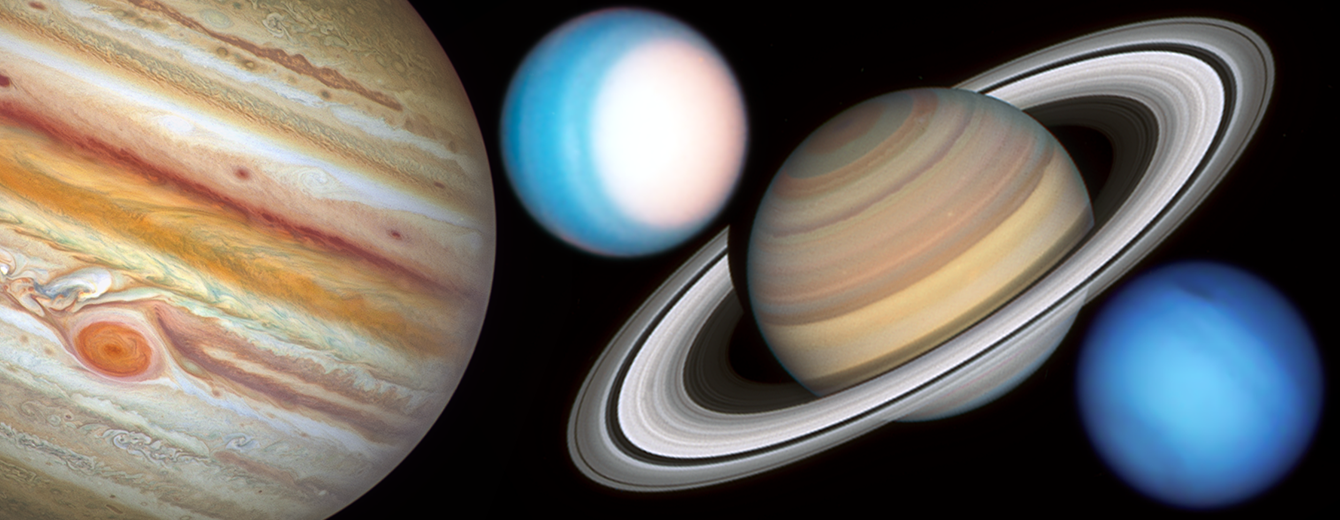Uranus Stories
Filters

Ed Stone, Former Director of JPL, Voyager Project Scientist, Dies
Known for his steady leadership, consensus building, and enthusiasm for engaging the public in science, Stone left a deep impact on the space community. Edward C. Stone, former director of NASA’s Jet Propulsion Laboratory in Southern California, and longtime project…

NASA’s Webb Rings in Holidays With Ringed Planet Uranus
NASA’s James Webb Space Telescope recently trained its sights on unusual and enigmatic Uranus, an ice giant that spins on its side. Webb captured this dynamic world with rings, moons, storms, and other atmospheric features – including a seasonal polar…

All Eyes on the Ice Giants
NASA’s New Horizons spacecraft plans to observe Uranus and Neptune from its location far out in the outer solar system this fall, and the mission team is inviting the global amateur astronomy community to come along for the ride –…

NASA Scientists Make First Observation of a Polar Cyclone on Uranus
Scientists used ground-based telescopes to get unprecedented views, thanks to the giant planet’s position in its long orbit around the Sun. For the first time, NASA scientists have strong evidence of a polar cyclone on Uranus. By examining radio waves…

New Study of Uranus’ Large Moons Shows 4 May Hold Water
The work is based on new modeling and explores how oceans could exist in unlikely places in our solar system.

NASA’s Webb Scores Another Ringed World With New Image of Uranus
Following in the footsteps of the Neptune image released in 2022, NASA’s James Webb Space Telescope has taken a stunning image of the solar system’s other ice giant, the planet Uranus. The new image features dramatic rings as well as…

Hubble Monitors Changing Weather and Seasons at Jupiter and Uranus
Ever since its launch in 1990, NASA’s Hubble Space Telescope has been an interplanetary weather observer, keeping an eye on the largely gaseous outer planets and their ever-changing atmospheres. NASA spacecraft missions to the outer planets have given us a…

Gravity Assist: It’s Raining Diamonds on These Planets
Follow via Apple Podcasts Follow via SoundCloud Follow via RSS Feed Left: Arriving at Uranus in 1986, Voyager 2 observed a bluish orb with subtle features. A haze layer hid most of the planet’s cloud features from view. Right: This image of…

Why Uranus and Neptune Are Different Colors
Neptune and Uranus have much in common yet their appearances are notably different. Astronomers now have an explanation for why the two planets are different colors.

Hubble’s Grand Tour of the Outer Solar System
From its vantage point high above Earth’s atmosphere, NASA’s Hubble Space Telescope has completed this year’s grand tour of the outer solar system – returning crisp images that complement current and past observations from interplanetary spacecraft. This is the realm…
